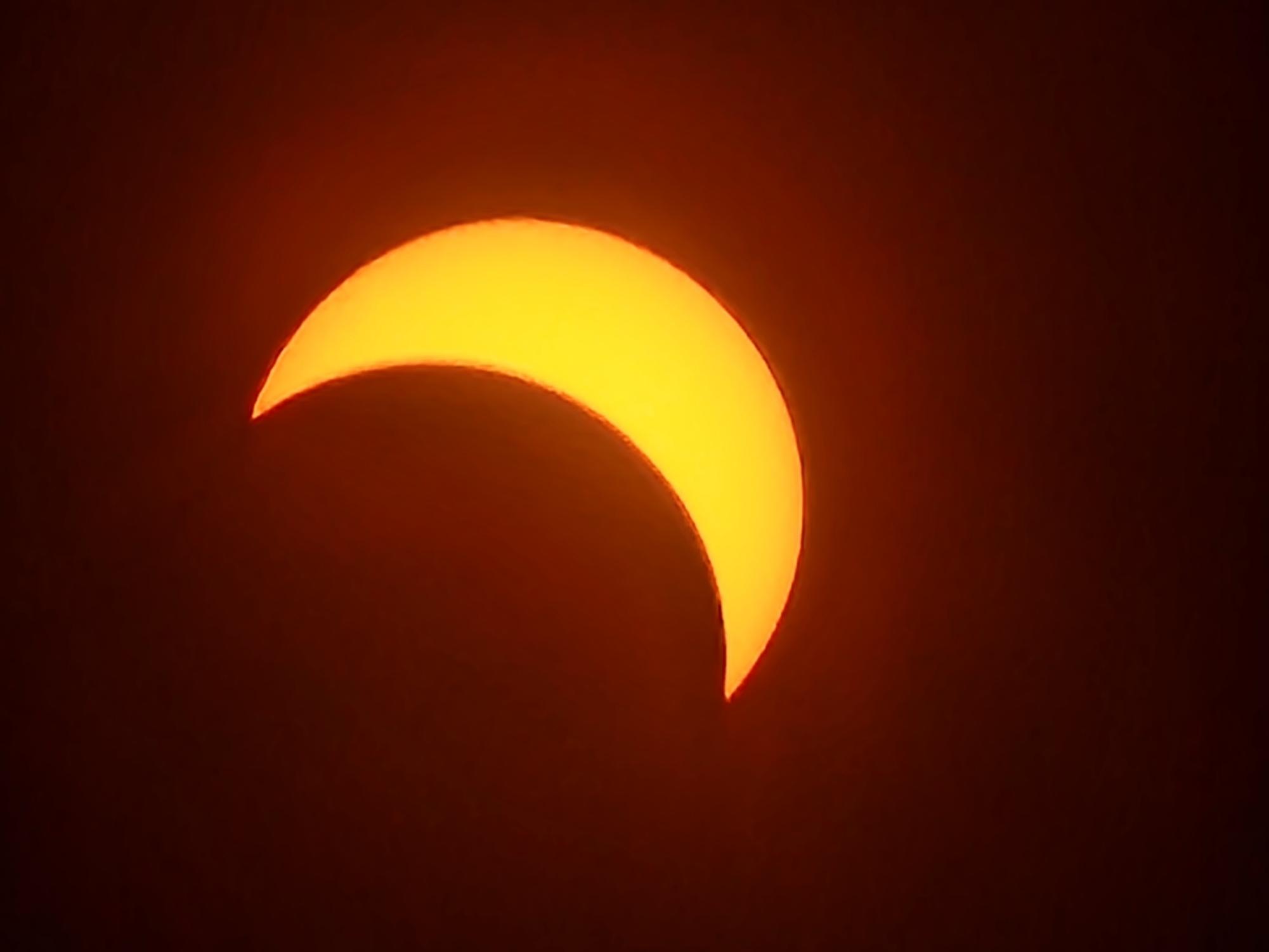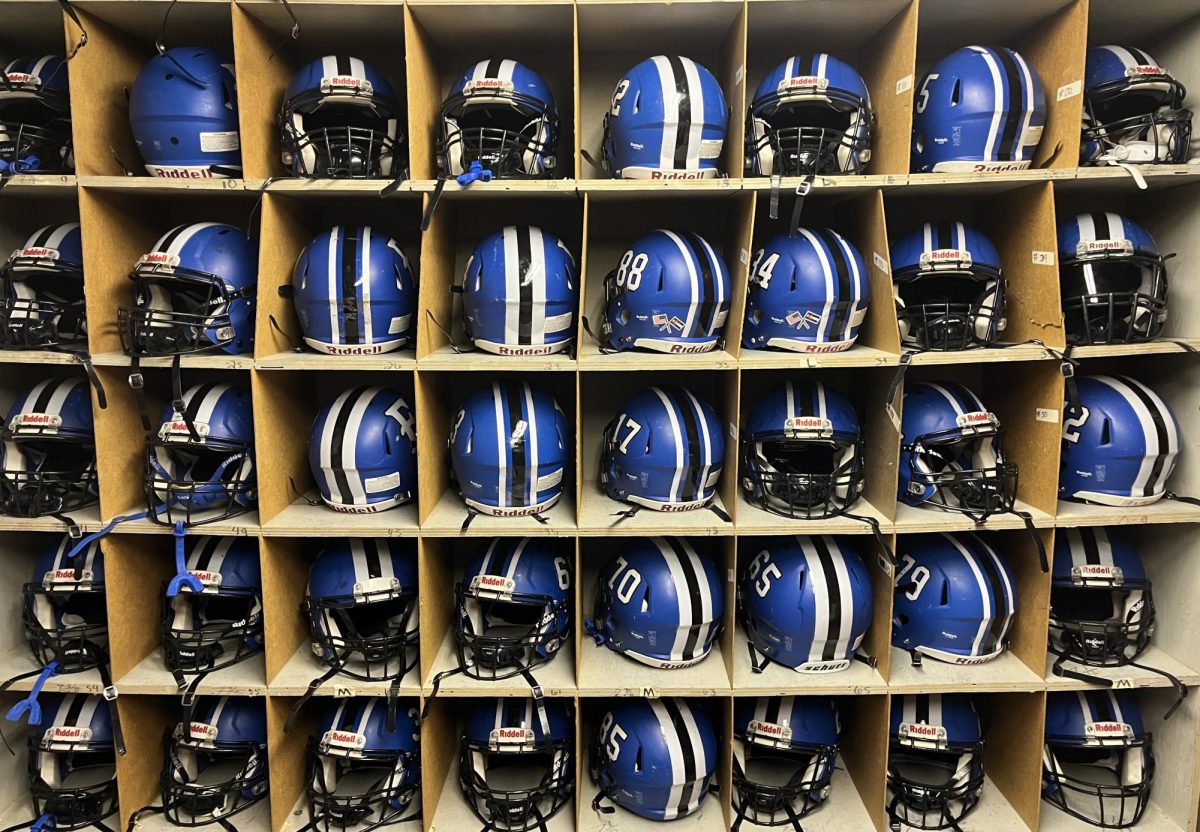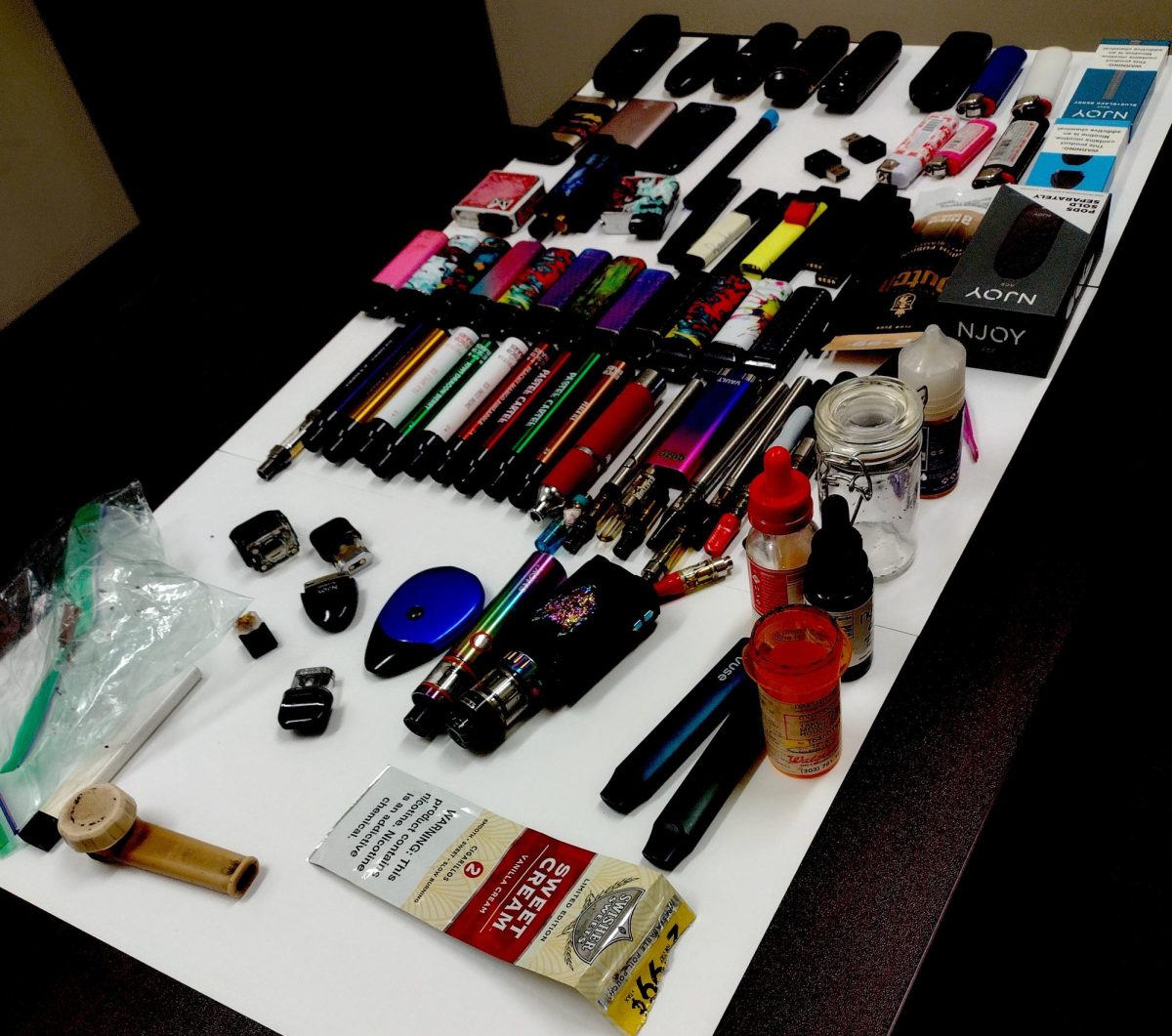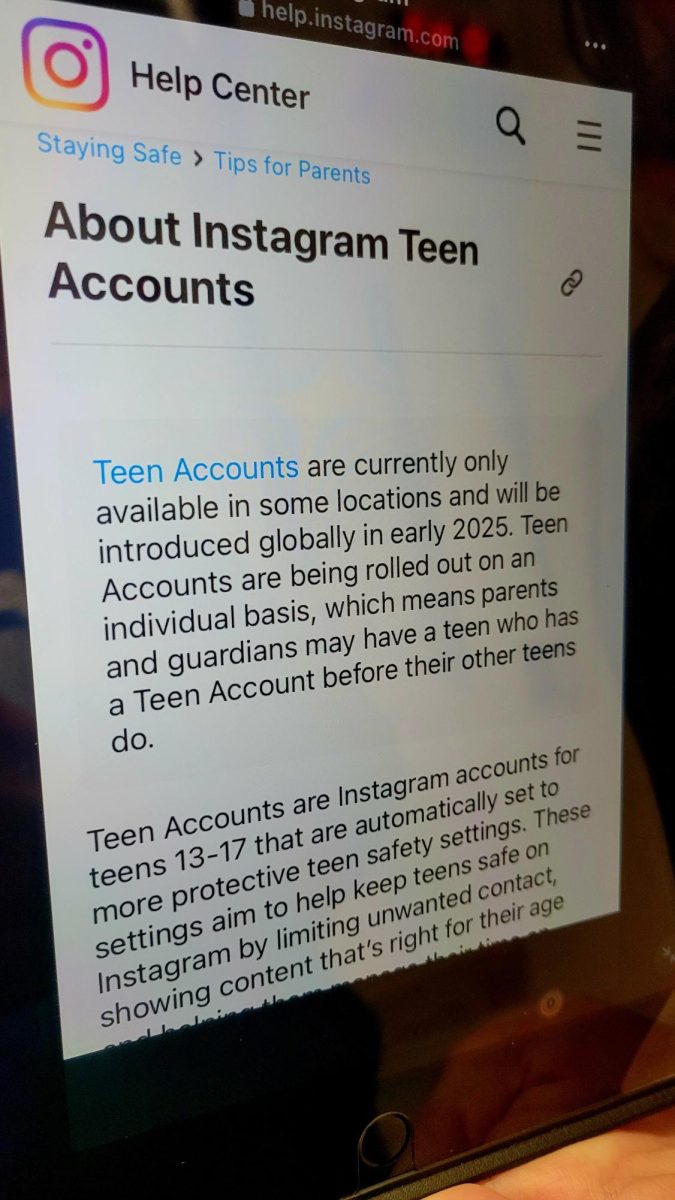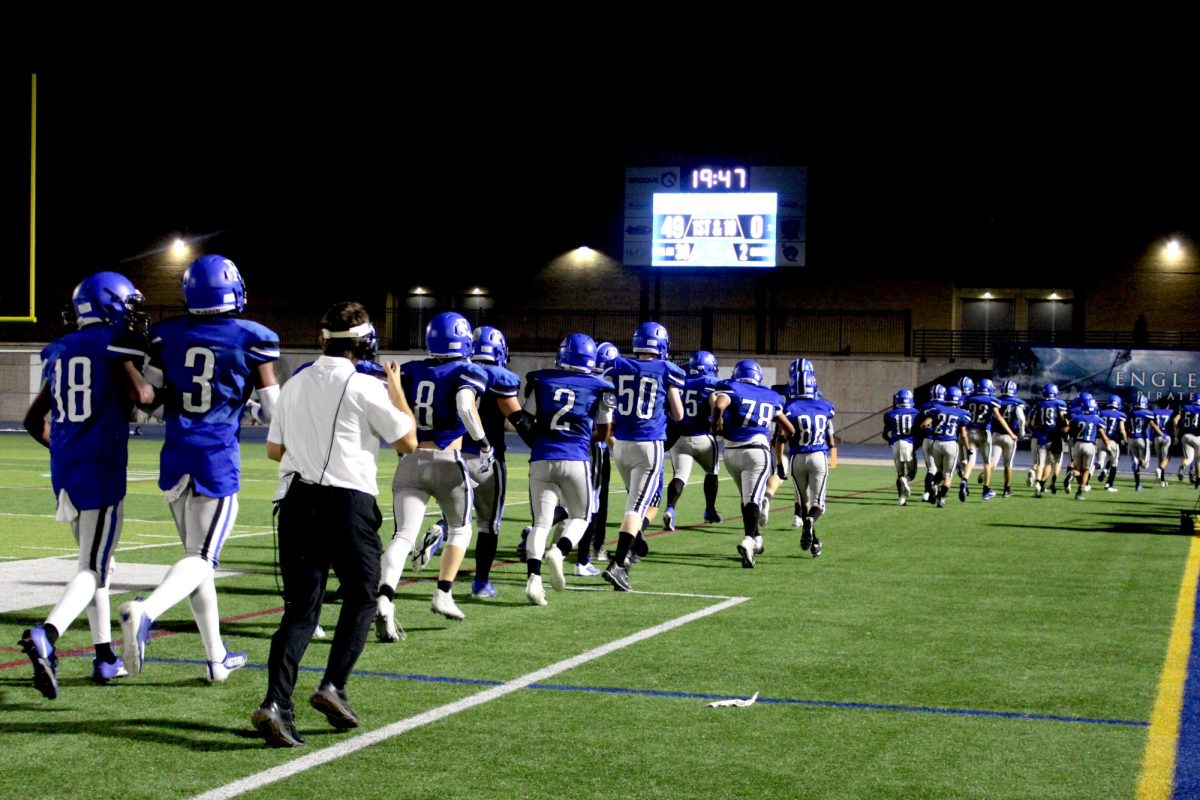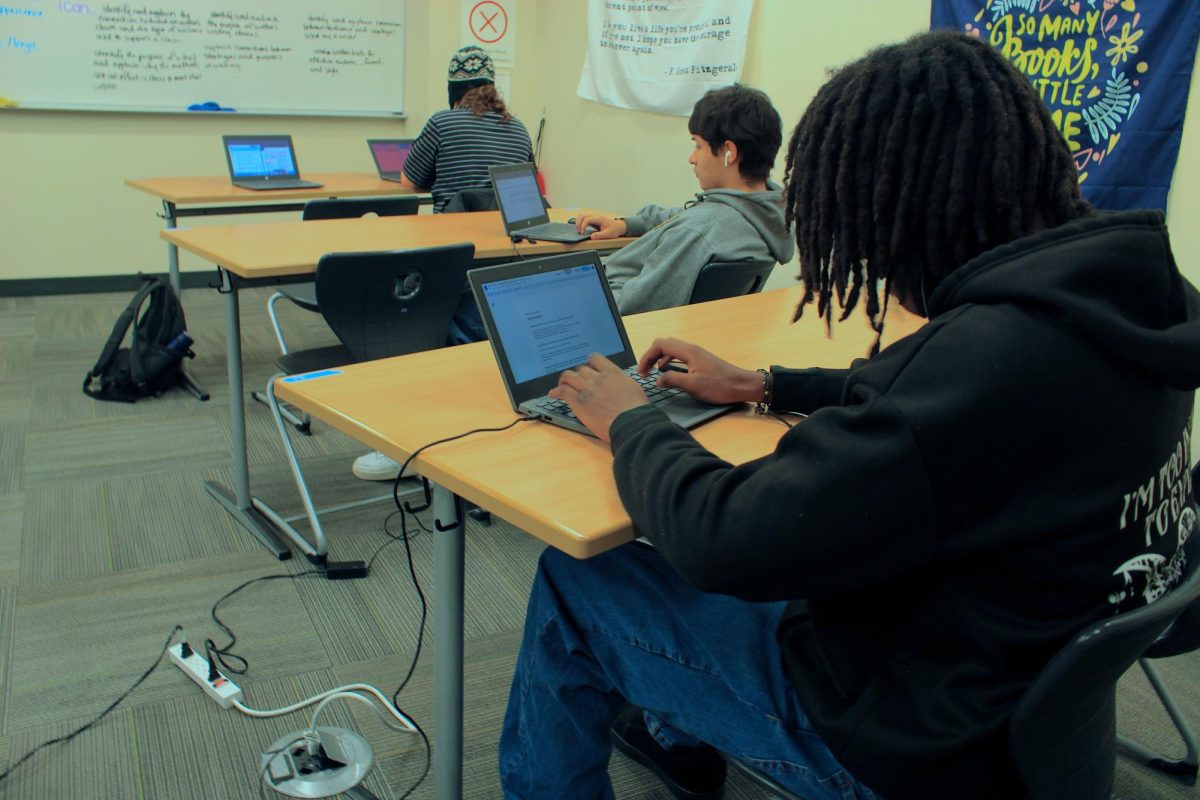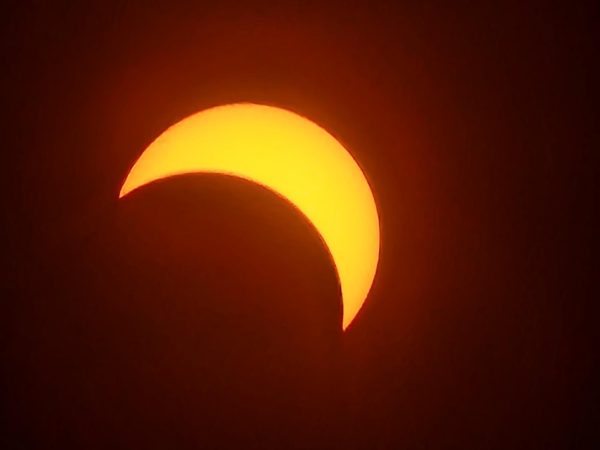
At around 12:30, April 8, 2024, Englewood High School students poured into Randy Penn Stadium, donned their ISO Eclipter glasses and looked to the sky.
“I liked being around my peers to watch the solar eclipse,” senior Josue Lopez Diego said. Students noticed that despite being outside of the totality zone, the light looked a lot different, “it looked dimmer,” said senior Bryan Ruiz, “there was a bunch of groups of people looking up to the sky to see the eclipse.”
“It was a once in a lifetime experience, so it was cool to watch with my friends,” senior Andrew Sanchez said.
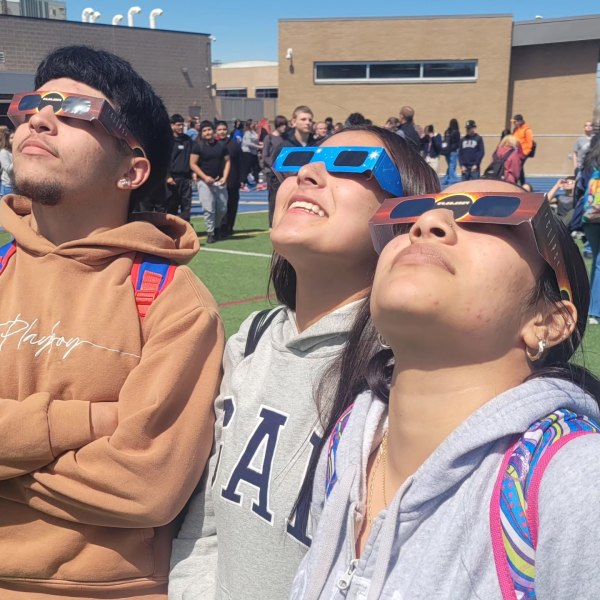
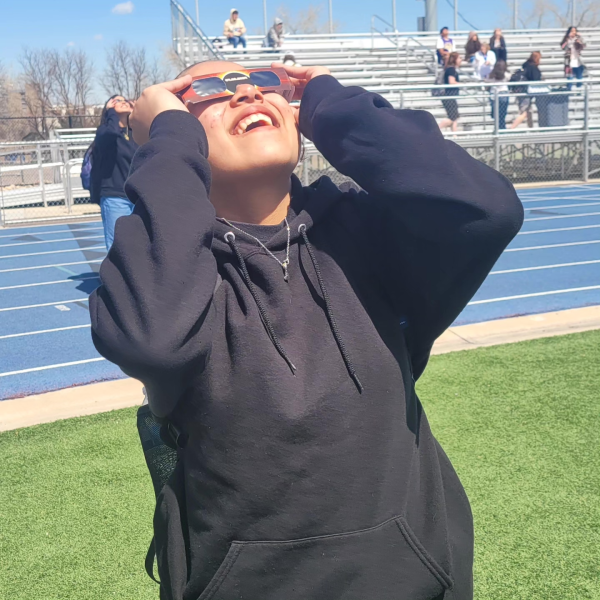
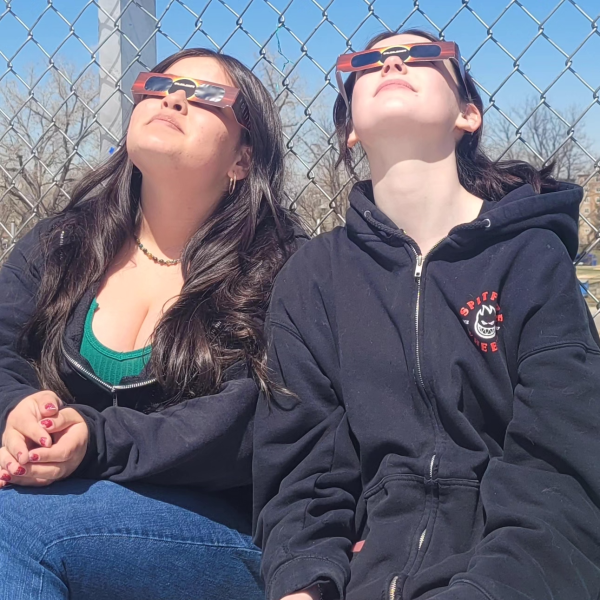
According to NASA, this event is different than the event in 2017. The official NASA Eclipse website explains “an estimated 215 million U.S. adults (88% of U.S. adults) viewed the solar eclipse, either directly or electronically. They experienced the Moon pass in front of the Sun, blocking part or all of our closest star’s bright face. The eclipse in 2024 could be even more exciting due to differences in the path, timing, and scientific research.” The NASA site says an eclipse season is one of only two times per year when the Sun, Moon and Earth are aligned.
“It was very cool to see half the sun covered by the moon in the middle of the daytime,” Lance Lammers said. “My favorite part is seeing all the kids amazed by astrology more than just what their sign is depending on their birthday,” said Lammers who will be 49 years-old the next time a solar eclipse happens.
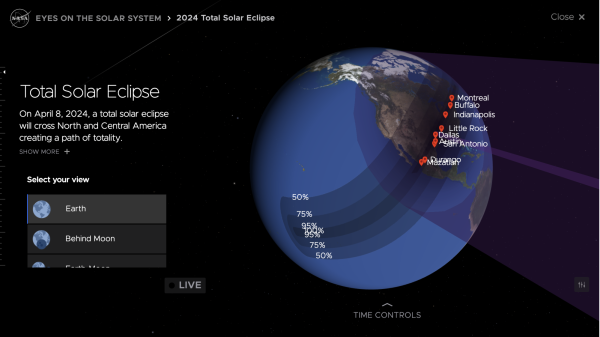
Most students thought we only saw about 50% to 60% of the sun covered in our viewing area. Several families traveled to the path of totality to get the opportunity to see the full eclipse, some students say while this is fun to see, they wouldn’t drive to a totality location, “I would not travel to see a full eclipse. It would be a waste of money. I would prefer to see a football game,” said senior Grant Pebbles.
The next total solar eclipse that can be seen from the contiguous United States will be on August 23, 2044.


